The Best Running Headphones
I’ve logged countless miles wearing Beats, Jabra, Shokz and many others. Here are the Bluetooth running buds I recommend
- How I Test
- The Quick List
- Best Running Headphones
- Best All-rounder
- Best Open Headphones
- Best Value Open Headphones
- Best Budget Running Headphones
- Best Value Running Headphones
- Best For Fit
- Best Bone Conduction Headphones
- Best For Sound Quality
- Best For Battery Life
- Best On-ear Pair
- More Great Running Headphones
- Buyer’s Guide

1. The List In Brief ↴
2. Best All-rounder: Jabra Elite 4 Active
3. Best Open Headphones: Bose Ultra Open Earbuds
4. Best Value Open Headphones: 1MORE Fit SE Open Earbuds S30
5. Best Budget Running Headphones: JLab Go Air Pop
6. Best Value Running Headphones: Tribit Flybuds 3
7. Best For Fit: Beats Powerbeats Pro
8. Best Bone Conduction Headphones: Shokz OpenRun Mini
9. Best For Sound Quality: Bose QuietComfort Earbuds II
10. Best For Battery Life: JLab Epic Air Sport ANC
11. Best On-ear Pair: Adidas RPT-01
12. Buyer's Guide
A pair of headphones can make or break a run. If they’re fiddly, uncomfortable or ill-fitting, or run out of juice before you’ve broken a sweat, they can cause stress and bring your outing to an abrupt, angry halt. But get them right and they can be a core instrument in keeping you motivated, providing the feedback and beats you need to power your runs.
I’ve spent considerable time testing and reviewing all the best workout headphones since 2017, and have whittled them down to this selection of buds that are particularly suited to runners. I’m confident you won’t be disappointed with any of the picks below, but to help narrow it down further I’ve given a select few the Editor’s Choice accolade. These top picks either have something that sets them apart from the pack or are a pair I’ve kept using long after I’ve reviewed them.
How I Test Running Headphones
I’m a running fanatic who usually logs 50-70 miles a week and has a marathon PR of 2hr 28min. I use each set of headphones I review for several runs, as well as other workouts and general use, looking at the fit and sound quality when outside in particular.
The Quick List
You’ll find in-depth reviews of each of my top running headphones picks below, but here’s a quick run-through of the best in key categories. Click on any buds here to jump straight to the full review below.
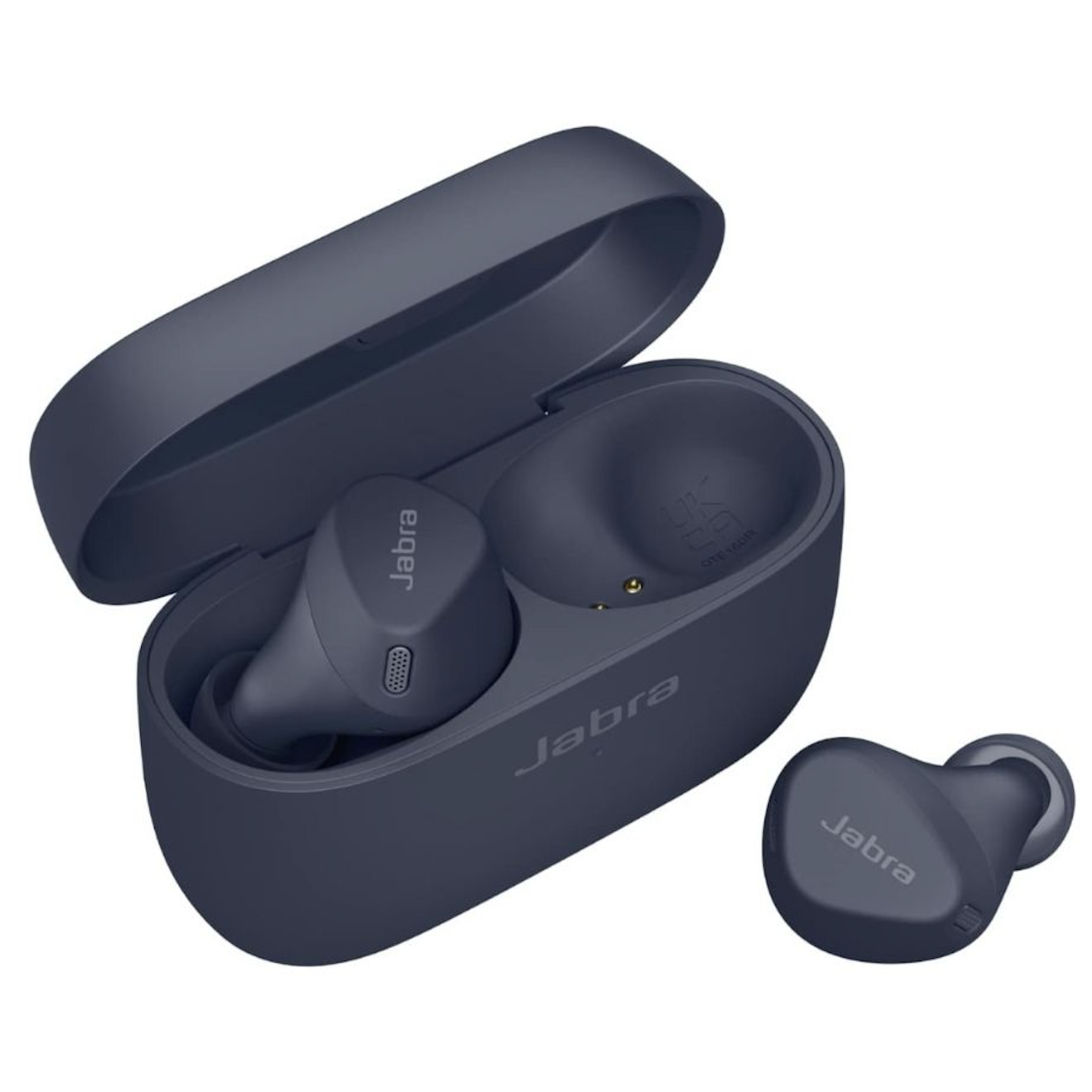
Best all-rounder
There are more impressive in-ear buds, including Jabra’s own Elite 8 Active, but the Jabra Elite 4 Active are great value and offer all the features you need, including great sound, a secure fit and long battery life, plus ANC and a transparency mode.
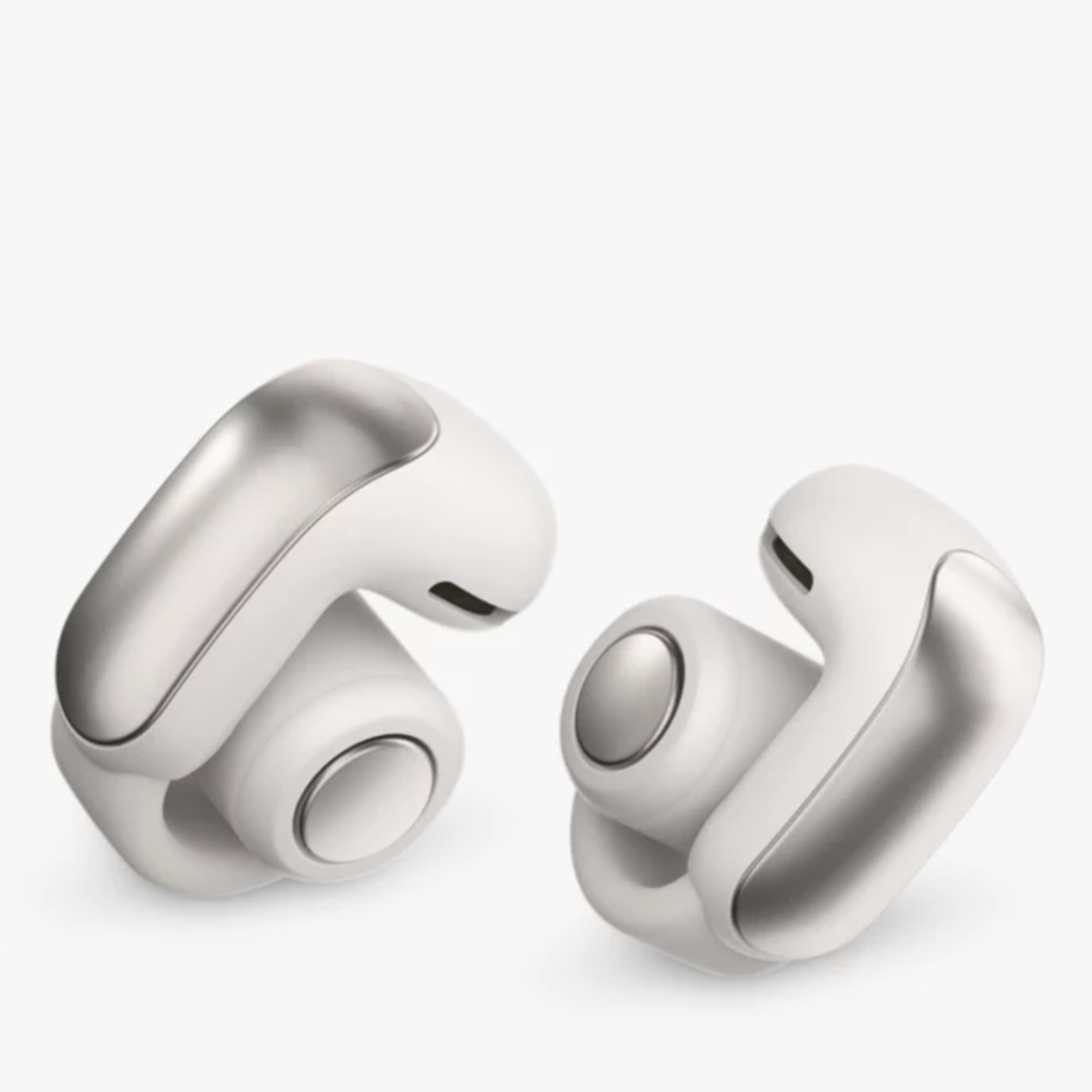
Best open headphones
If you want to keep your ears clear on the run to stay aware of your surroundings, the Bose Ultra Open Earbuds are the best option, mainly because of their impressive sound quality for an open design and the clever and comfortable clip-on fit.
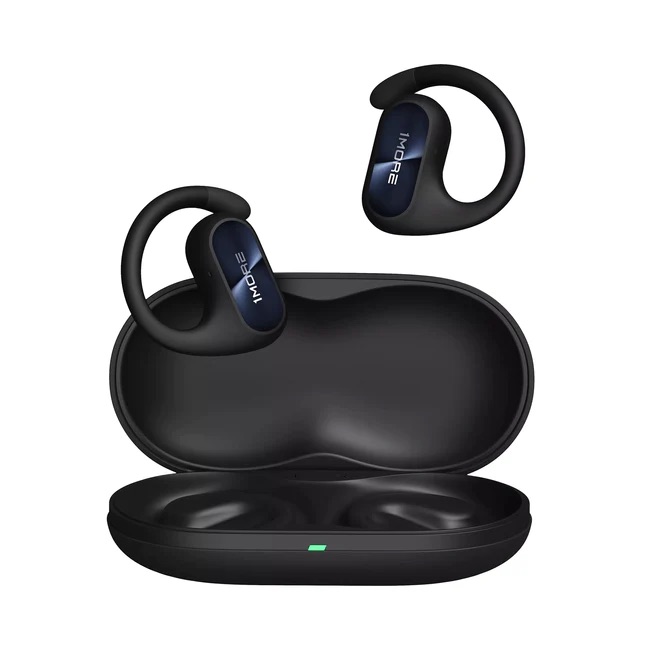
Best-value open headphones
A more affordable option for those who want extra awareness, the 1MORE Fit SE Open Earbuds S30 hook onto the ear to position a speaker near your ear canal without blocking it. They sound pretty good and are great value.
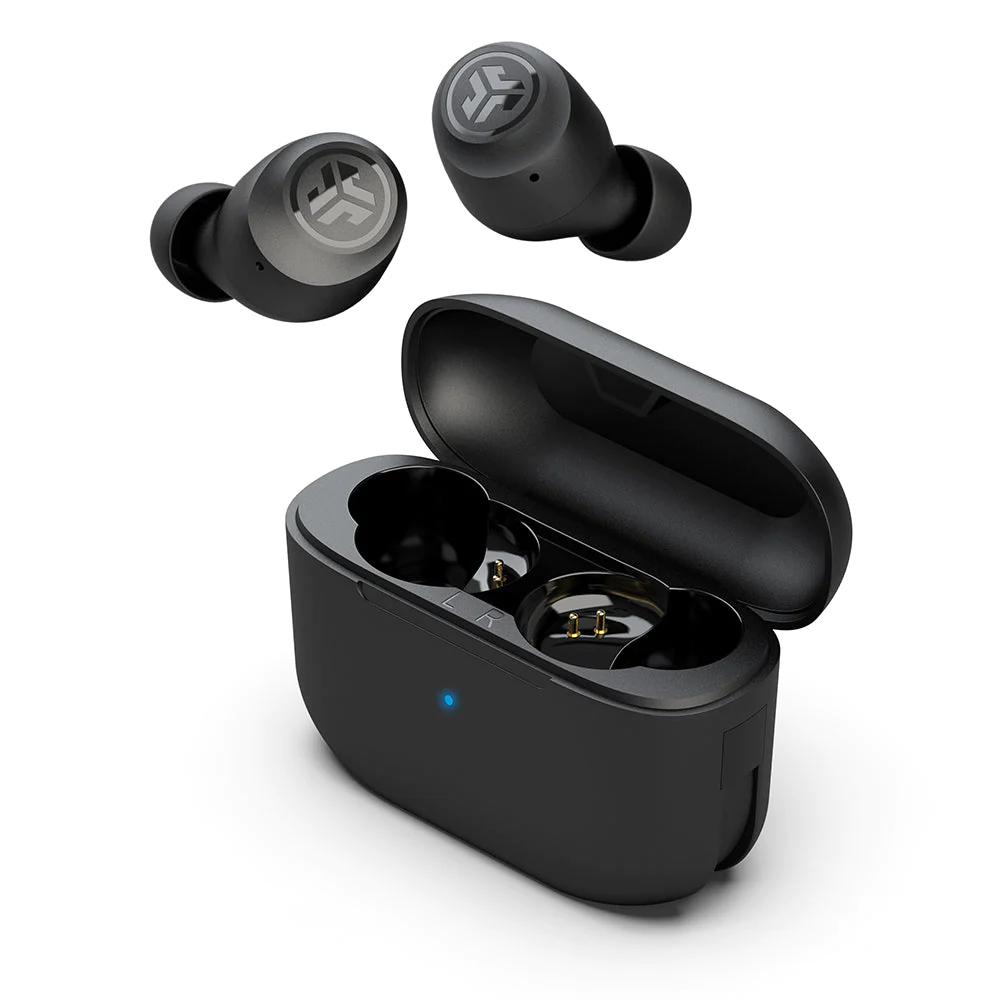
Best budget running headphones
The JLab Go Air Pop are remarkably good given how little they cost. The sound quality is more than acceptable for the price, the in-ear fit is just about secure enough for running, and the battery life is an impressive eight hours.
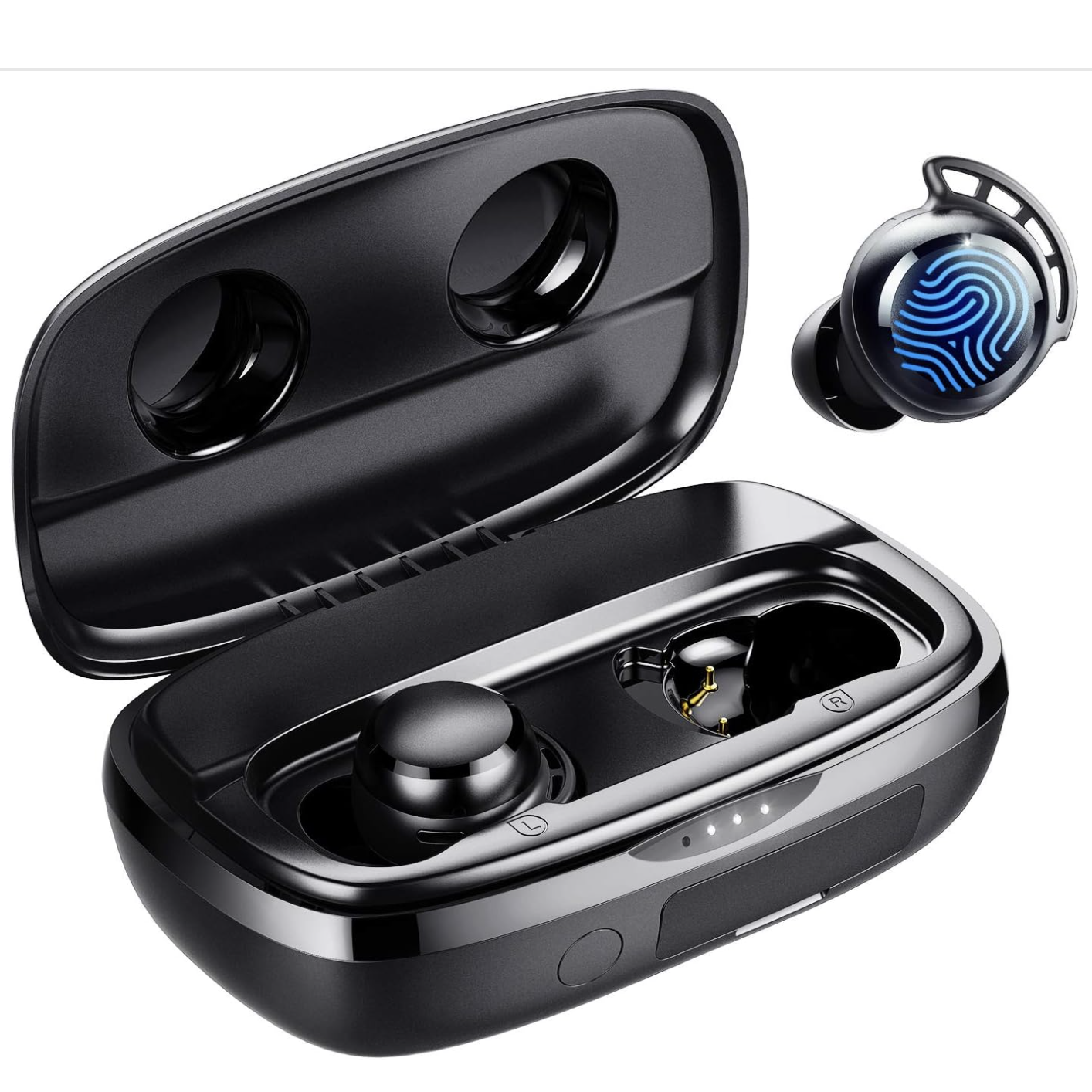
Best value running headphones
The Tribit Flybuds are excellent no-frills, in-ear buds that stay in place during runs and sound great considering their low price. If you don’t need or want features like ANC, the Flybuds will suit you very well, and they offer outstanding battery life.
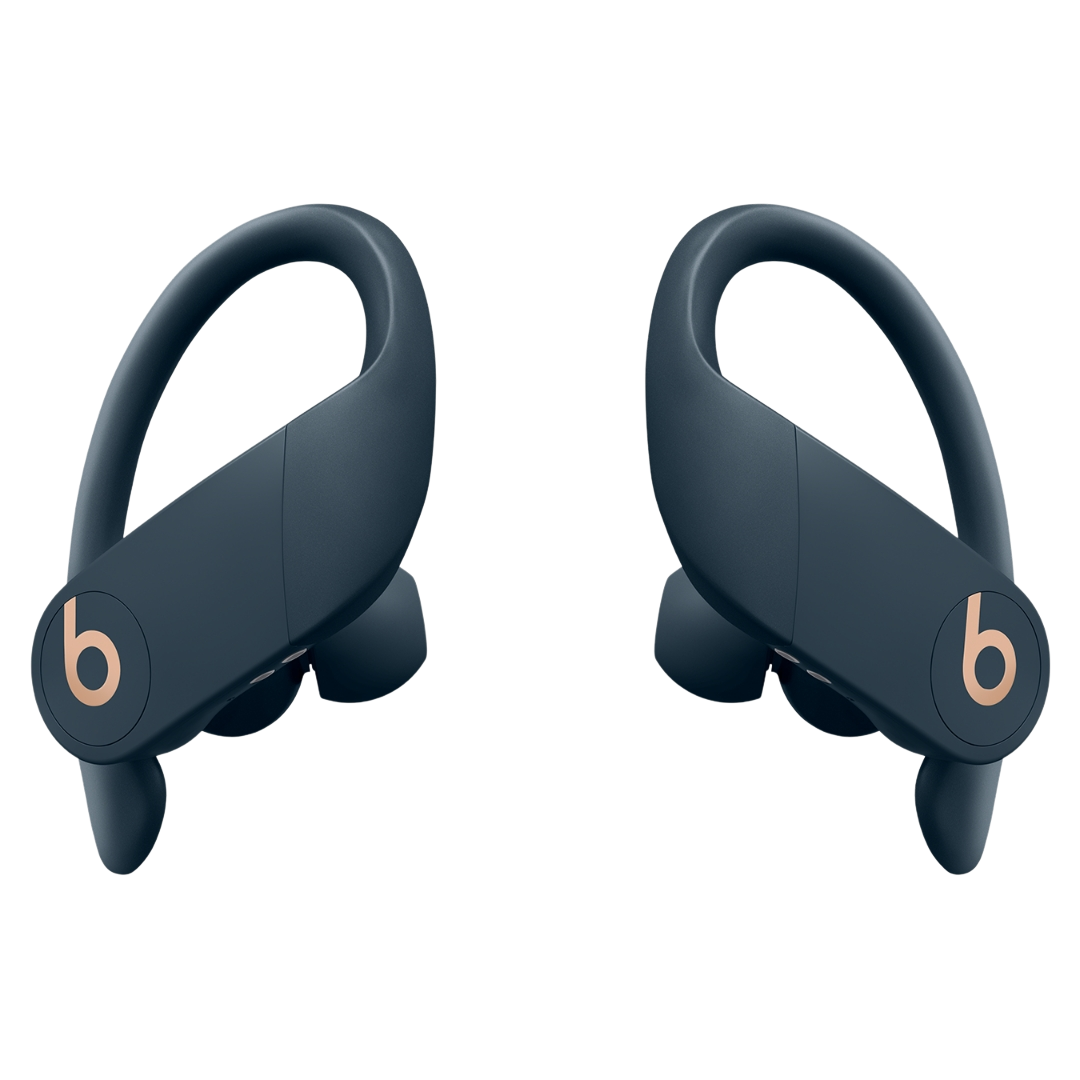
Best for fit
If you want the most secure fit possible when running, it’s hard to beat an earhook, and the Beats Powerbeats Pro also offer excellent sound quality and long battery life. They’re older buds now, but still top-notch and can usually be found in sales.

Best open headphones
Shokz make the best bone conduction headphones and the OpenRun stand out within their range as matching the key features of the OpenRun Pro while being cheaper. I prefer the Mini version of the headphones because they have a closer fit.
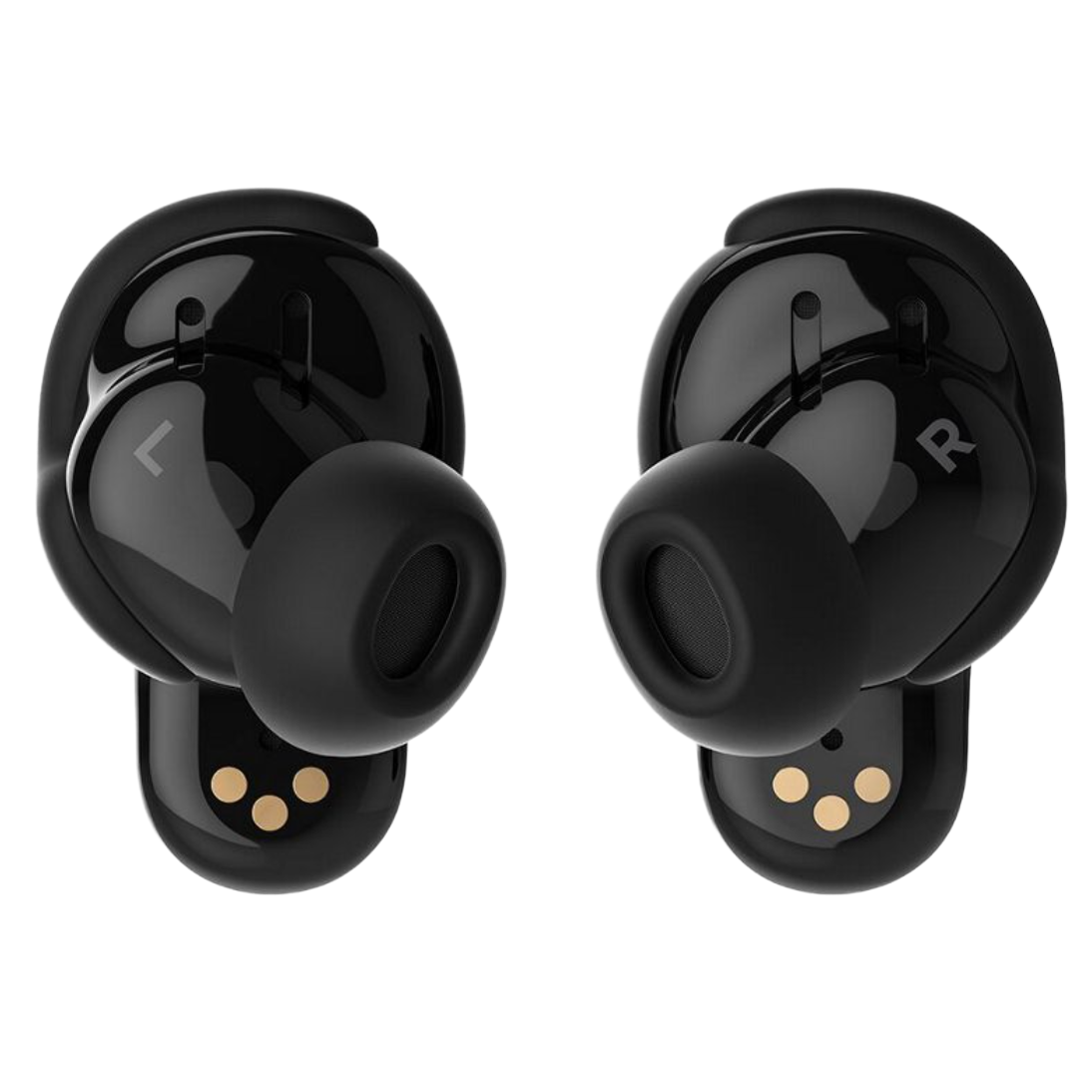
Best for sound quality
The Bose QC Earbuds II sound excellent, as you’d expect from Bose, and have a secure enough fit for regular running. They're great crossover buds as a result, if you just want one set for everything.
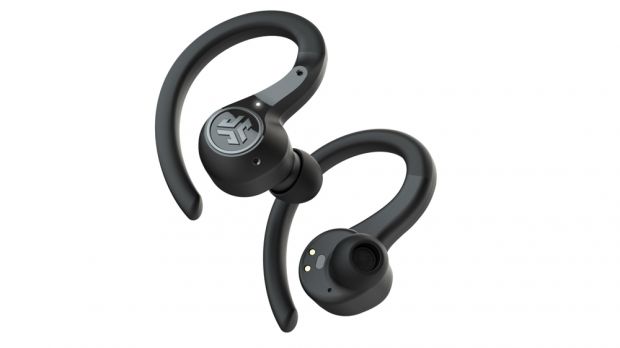
Best for battery life
These hook headphones have a great fit and last 15 hours on a charge. With the case adding another 55 hours, the JLab Epic Air Sport ANC will last you through your longest adventures, and the sound quality is good for fairly cheap buds.
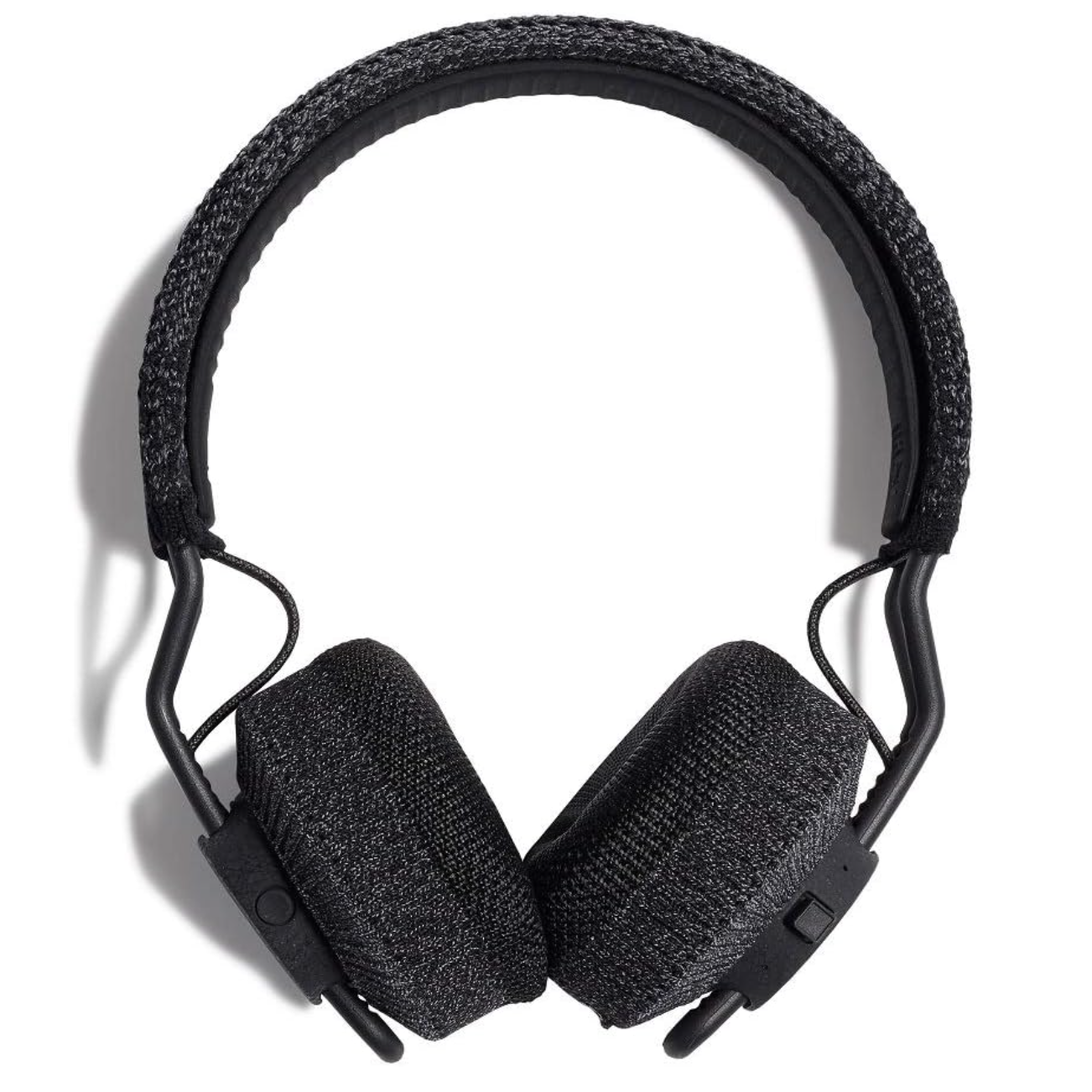
Best on-ear pair
If you prefer on-ear headphones for running, the Adidas RPT-01 have a secure but comfortable fit, and don’t get too hot and sweaty, unlike many on-ear headphones. You can also wash the covers after a few runs to freshen them up.
The Best Running Headphones
Best All-rounder
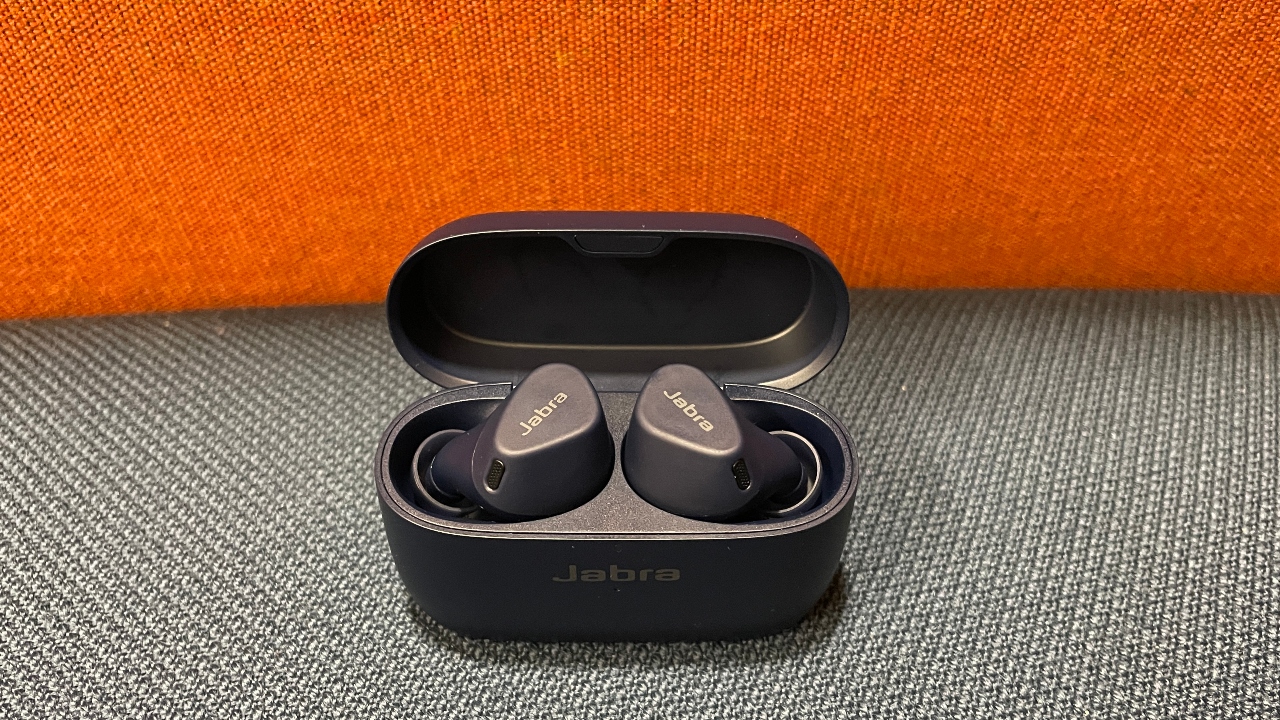

Specifications
Reasons to buy
Reasons to avoid
There are several pairs of excellent Jabra headphones on this list, with the Elite 8 Active buds the stand-out, for those willing to spend $200/£200. However, it’s the Elite 4 Active that I think offer the best overall mix of price and features for runners. The Elite 8 Active buds have better sound and ANC, but the Elite 4 Active headphones are still good on both fronts and are much cheaper.
The wingless fit is secure and comfortable, and the battery life is strong: seven hours on the buds, with another 21 hours in the case. Unless you need wings or a hook to keep buds in place on the run—I normally do but found the Elite 4 Active secure —I believe these are the best all-round buds you can get. They are often in sales, too, which makes them even better value.
Read more in my Jabra Elite 4 Active review
Best Open Headphones
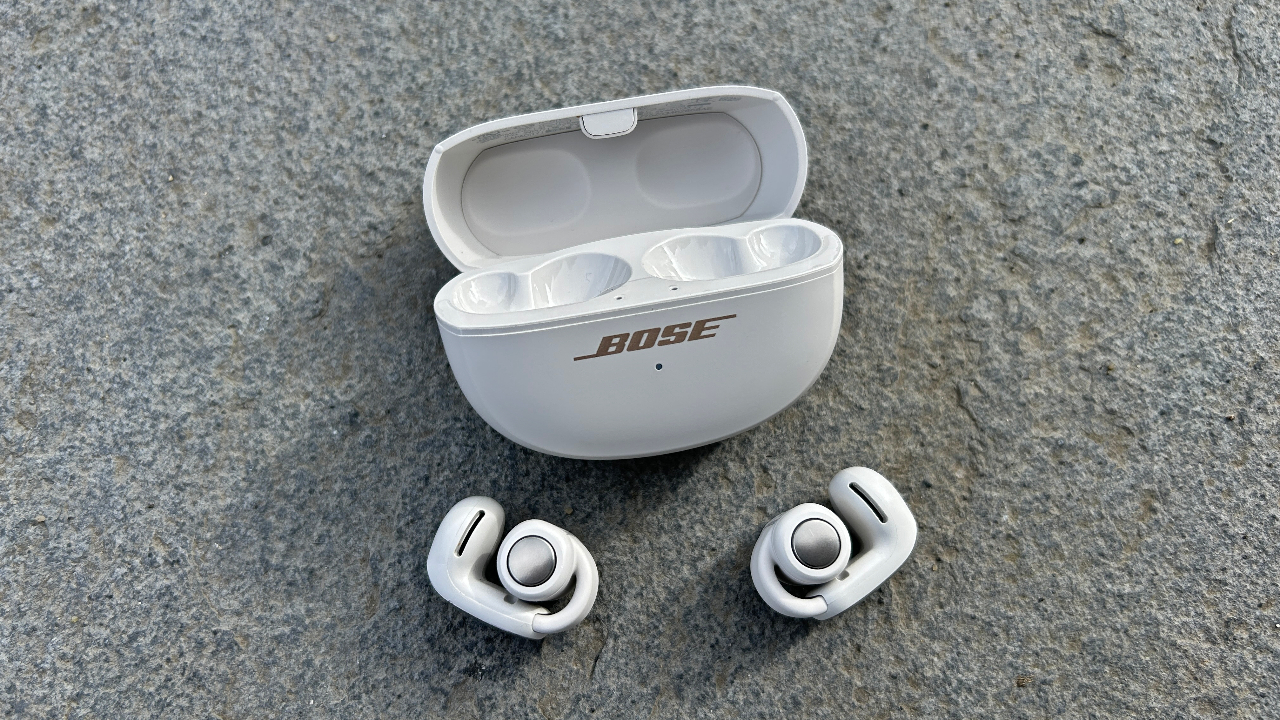
Specifications
Reasons to buy
Reasons to avoid
The Bose Ultra Open Earbuds are expensive, but they’re also the best running headphones I’ve used. I prefer an open design on the run and the Bose buds have the best fit and sound quality I’ve come across in open headphones, with their clasp-style fit being comfortable and secure.
Sound quality is often where open headphones fall down but the Ultra Open Earbuds deliver clear and powerful sound, and can be heard even when running on a windy track or by a busy road. They’re enjoyable to use outside runs, even if they can be drowned out when traveling on loud public transit. The fact they sit on the side of the ear also means they’re easier to wear alongside glasses and other headwear on the run because they don’t hook over the ear.
Read more in my Bose Ultra Open Earbuds review
Best Value Open Headphones
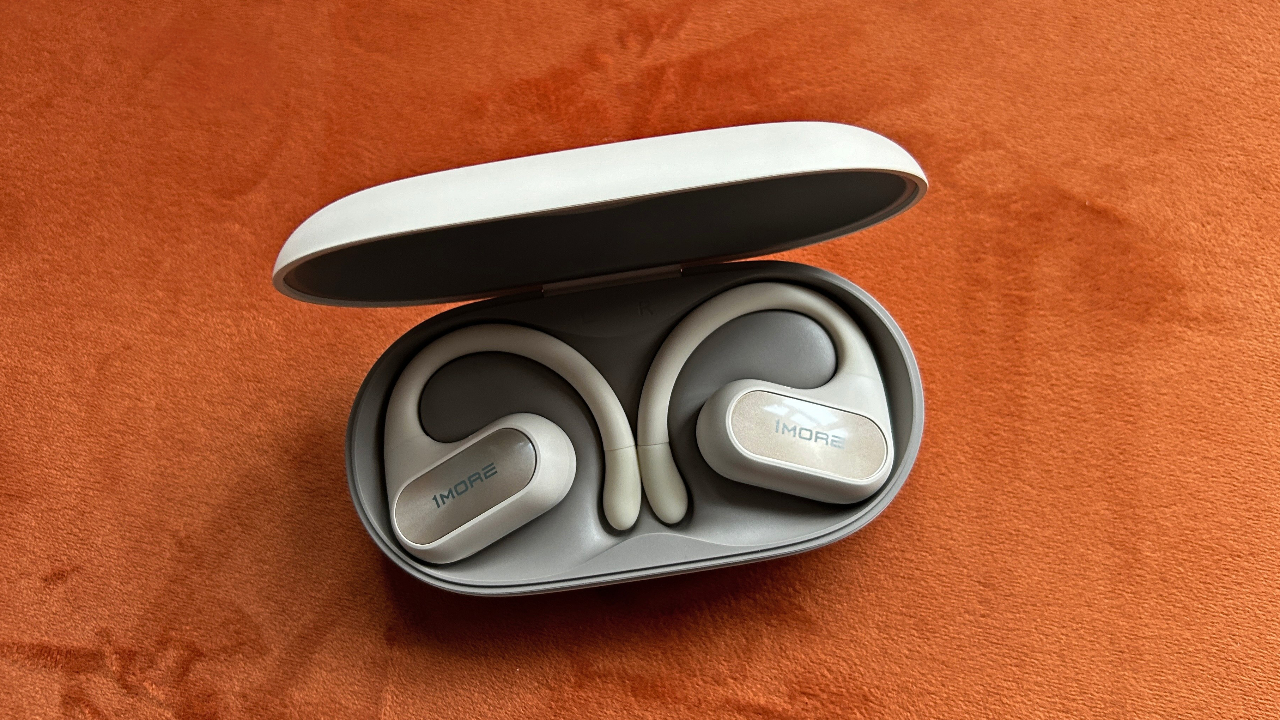
Specifications
Reasons to buy
Reasons to avoid
The Shokz OpenFit may be more comfortable and impressive all round, and the Cleer Arc II sound better, but the 1MORE S30 open buds are less than half the price of those headphones and an excellent open option for those who don’t want to spend big. They fit securely, sound good and last 10 hours on a charge.
On longer runs I found the ear hooks dug into the back of my ears, which isn’t that comfortable, but won’t be a major problem if you’re using them just for training sessions. However, it diminishes their appeal as cross-over lifestyle/running buds and, if you want open headphones that can cover both bases, the Shokz or Cleer buds are a better pick because they’re more comfortable and sound better.
Read more in my 1MORE Fit SE Open Earbuds S30 Review
Best Budget Running Headphones
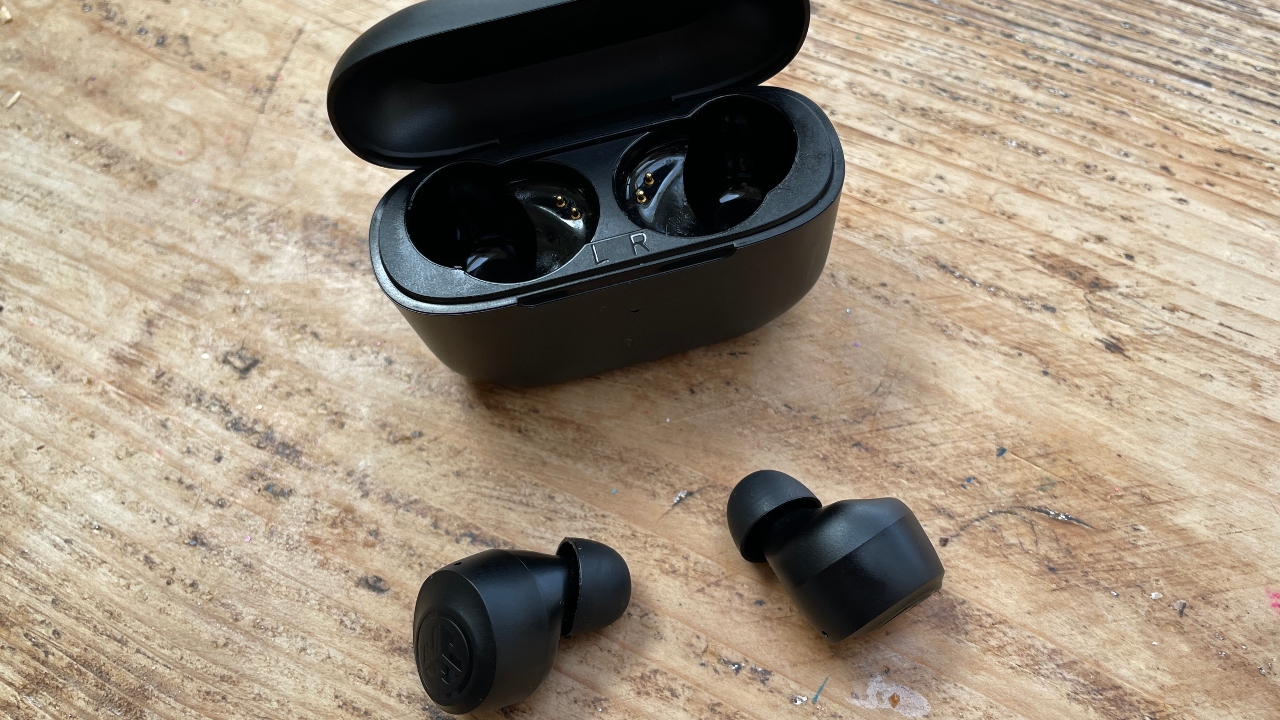
Specifications
Reasons to buy
Reasons to avoid
If you can get on with the fit of the JLab Go Air Pop headphones, which don’t have wings or an ear hook to keep them in place, they offer incredible value at just $20/£20. The sound quality is surprisingly good for the price, matching up well with headphones that cost closer to three figures. They offer eight hours of battery life, and the bonus is that the charging cable is built into the case so you’ll never lose it.
I found that the buds stayed in place reliably on my runs, which included a very hot and sweaty marathon. My only mild gripe with the headphones was their unreliable controls, which were hard to use when sitting at a desk, let alone while running.
Read more in my JLab Go Air Pop review
Best Value Running Headphones
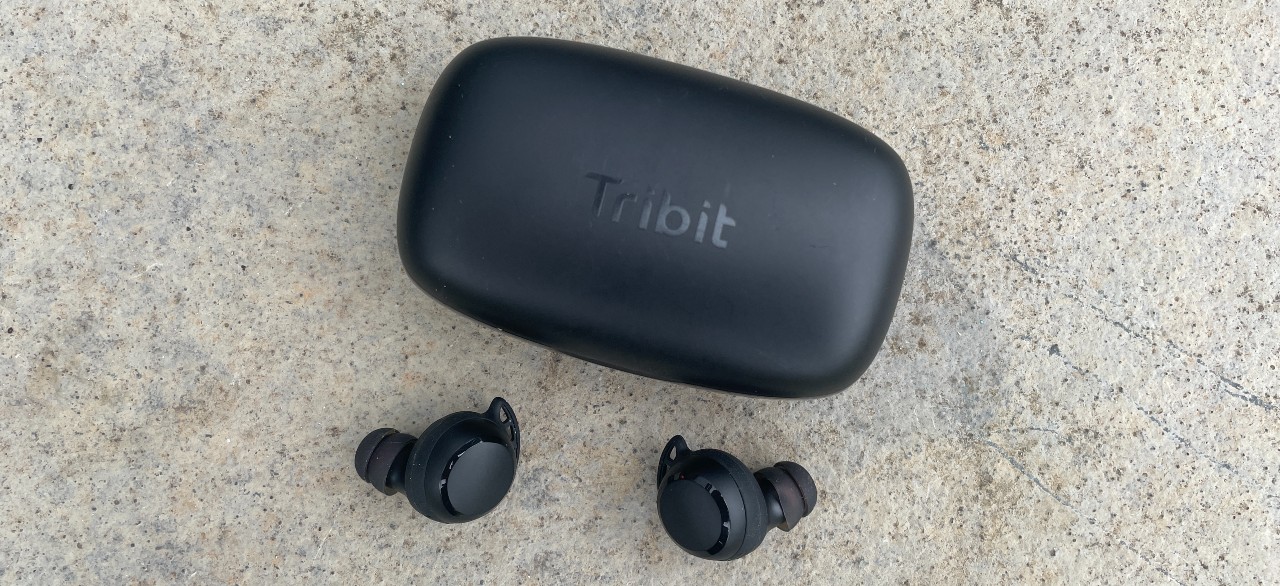
Specifications
Reasons to buy
Reasons to avoid
I don’t expect too much from sub-$50/£50 headphones, especially in sound quality, but the Tribit FlyBuds 3 measure up well to headphones that cost twice or even three times as much, setting a new bar in the budget bracket.
The fit of the buds is secure even on long, sweaty runs, and they offer excellent battery life. When I tested them the battery lasted five hours on the buds with an extra 95 hours in the case, but the headphones have since been updated to offer eight hours plus 142 in the case. The IP rating has also improved since I tested them, the IPX8 rating meaning they are fully waterproof. Now that’s value.
Read more in my Tribit FlyBuds 3 review
Best For Fit
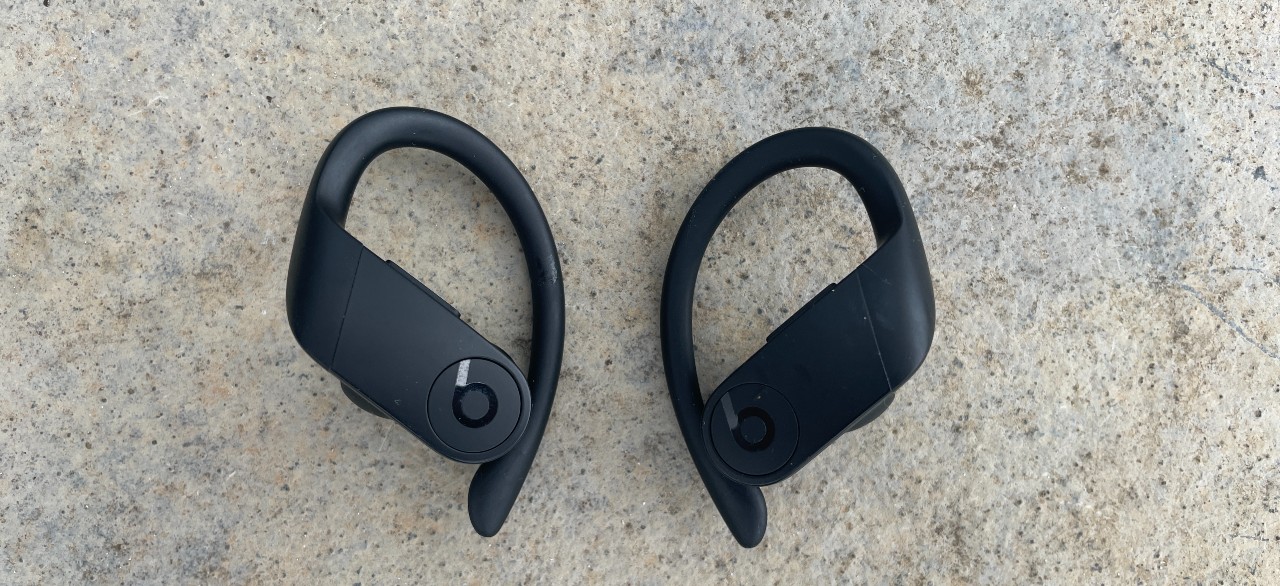
Specifications
Reasons to buy
Reasons to avoid
The Powerbeats Pro originally launched in 2019 and are the oldest headphones on this list, but I think they still stand up as one of the best options for runners, and are the best running buds in Beats’ range. That’s largely thanks to the ear hook design, which means that they offer a rock-solid fit for running.
That ear hook means the buds are quite large and more noticeable on the ear than in-ear buds, and also that their case is too bulky to fit in a pocket, but the extra reliability on fit is worth those minor negatives. The Powerbeats Pro also offer an exceptional nine hours of battery life, and five minutes in the case will net you 90 minutes of playback.
Read more in my Beats Powerbeats Pro review
Best Bone Conduction Headphones
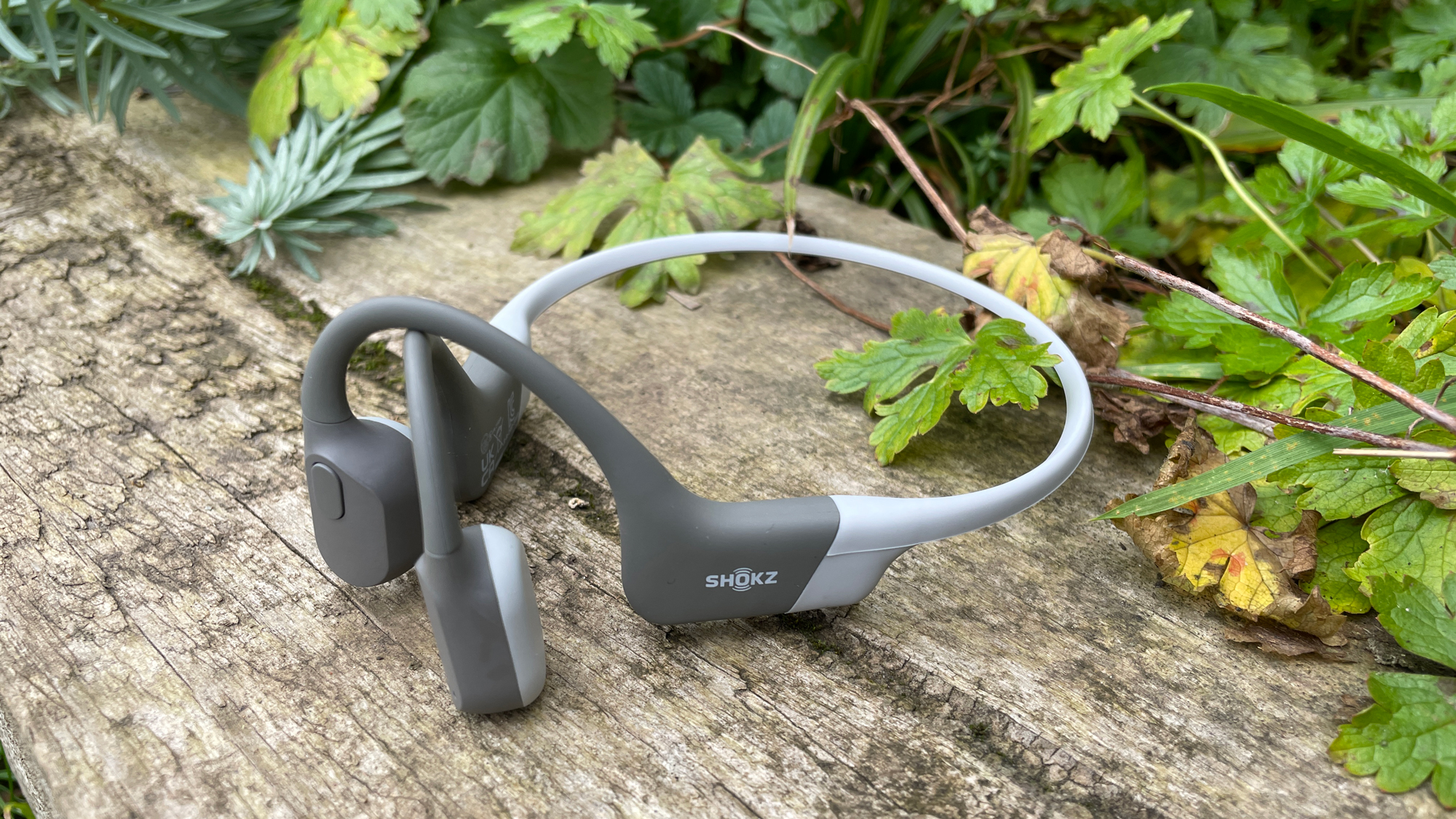
Specifications
Reasons to buy
Reasons to avoid
Shokz (formerly AfterShokz) is the biggest name in bone-conduction headphones. The OpenRun range has a lightweight, comfortable design—especially the Mini version which has a shorter band, so it sits closer to the back of your head—and solid sound quality, within the limitations of bone conduction tech. It won’t match the sound of in-ear buds but the extra awareness is a boon at times, such as when running on busy roads, and at races where bone-conduction headphones are the only type allowed.
I used the OpenRun for training and races long after I’d finished testing them and I consider them the best option in Shokz’s range. They come in at $50/£30 cheaper than the OpenRun Pro while offering pretty much all the same key features. The Pro headphones last two hours longer on a charge and offer more bass, but have a lower waterproof rating than the standard OpenRun. I found the difference in sound quality negligible during real-world use.
Read more in my Shokz OpenRun review
Best For Sound Quality
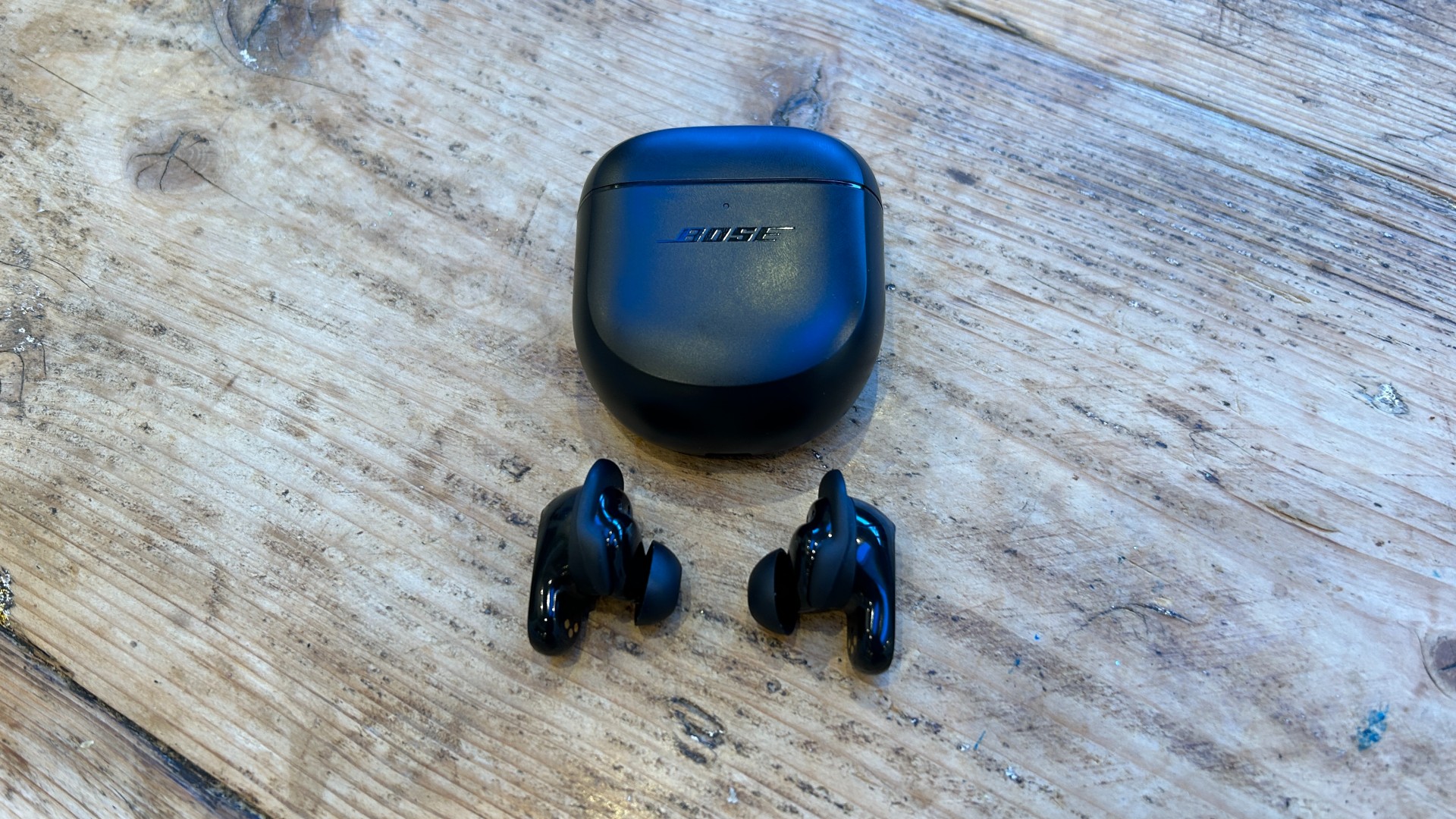
Specifications
Reasons to buy
Reasons to avoid
I was hoping the fit of the Bose QC Earbuds II would be secure enough for running, because they are sensational headphones to use outside of training, with great sound quality and the best ANC from any buds I’ve tested. Fortunately, the fit is good enough, so you can enjoy that sound quality during your workouts.
Stability bands in three sizes are included with the buds and these are the key to a reliable fit while running. I found the largest ones were good enough for me, but for more security you can buy extra tips and bands from Bose including an XL size. The only real downside is that the awareness mode suffered from wind noise when running outdoors so it wasn’t always easy to hear other sounds. Otherwise these are the perfect cross-over buds for general life as well as running.
Read more in my Bose QuietComfort Earbuds II review
Best For Battery Life
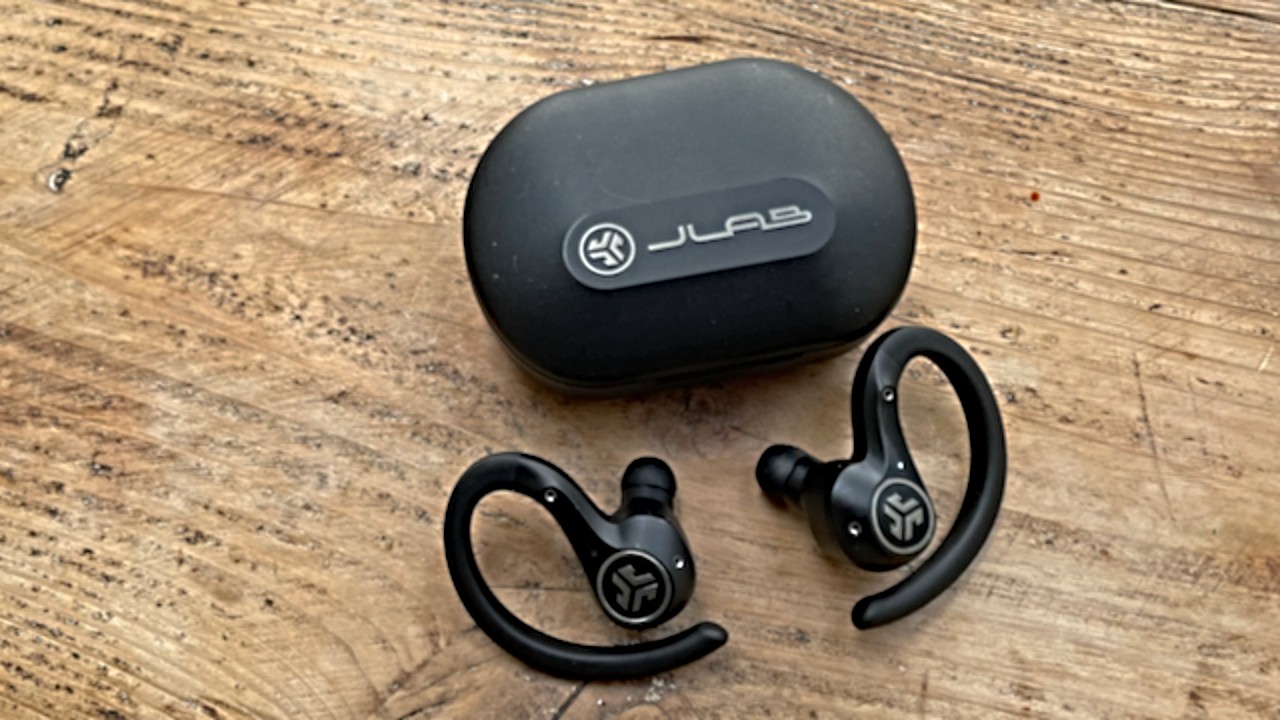
Specifications
Reasons to buy
Reasons to avoid
These truly wireless headphones offer an outstanding 15 hours of battery life in the buds, and with another 55 hours in the carry case they will need only rare trips to the socket. And when they do, having the cable tucked into the carry case means you won’t have to hunt for your charger.
The fit is secure thanks to the ear hook design, and the headphones have an adjustable Be Aware mode so you can set how much noise you want let in from your surroundings. The active noise cancellation is unimpressive, barely making any difference, but the overall sound quality is good for sub-$100/£100 buds.
Read more in my JLab Epic Air Sport ANC review
Best On-ear Pair
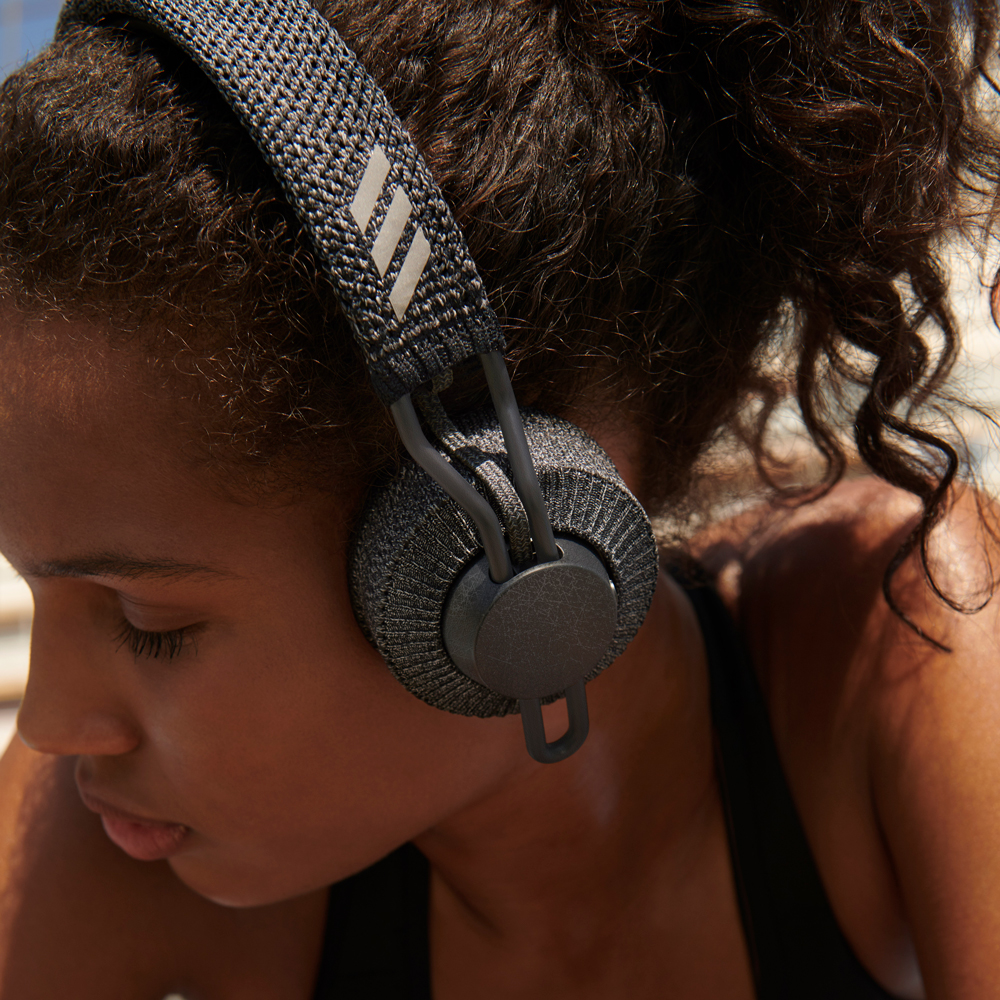
Adidas RPT-01
Specifications
Reasons to buy
Reasons to avoid
On-ear headphones bring with them the benefit of more space to cram in bigger batteries and drivers, so they last longer and sound better than small buds, but they don’t tend to do well on runs because they work themselves loose and fall off. Not the Adidas Sport RPT-01 headphones, which have as tight a fit as you can get with on-ear cans, as well as ear cushions and an inner headband that can be removed and washed after a sweaty session.
I still prefer the smaller, less intrusive fit of in-ear or hook headphones, but the RPT-01 are good for relaxed runs when you really want the extra sound quality of on-ear headphones. The headphones last for 40 hours on a single charge and the lightning-fast charging cable really does live up to its billing.
More Great Running Headphones
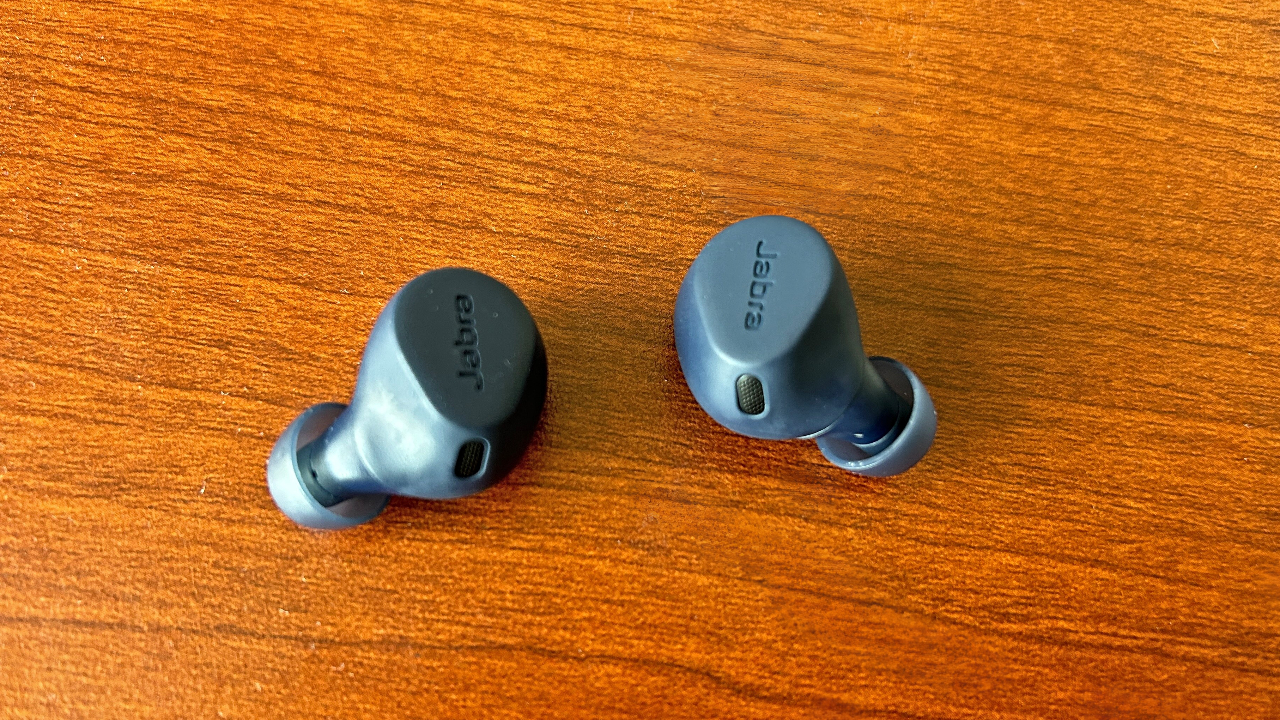
Specifications
Reasons to buy
Reasons to avoid
The Jabra Elite 4 Active are my top pick overall because they do so much, and at a great price. If you want to upgrade within Jabra’s range then the Elite 8 Active are outstanding. The sound quality and ANC are notably better than on the Elite 4 Active, while the Elite 8 Active buds also have a ShakeGrip coating that makes for a more secure fit, along with longer battery life.
While some will find the wingless fit isn’t secure enough for their workouts, especially HIIT sessions where you jump around a lot, I’ve not had problems on this front—and I do struggle with in-ear buds squirming loose when sweaty. If you really need a wing the Beats Fit Pro are a similar price, though I found the Jabra headphones more comfortable.
Read more in my Jabra Elite 8 Active review
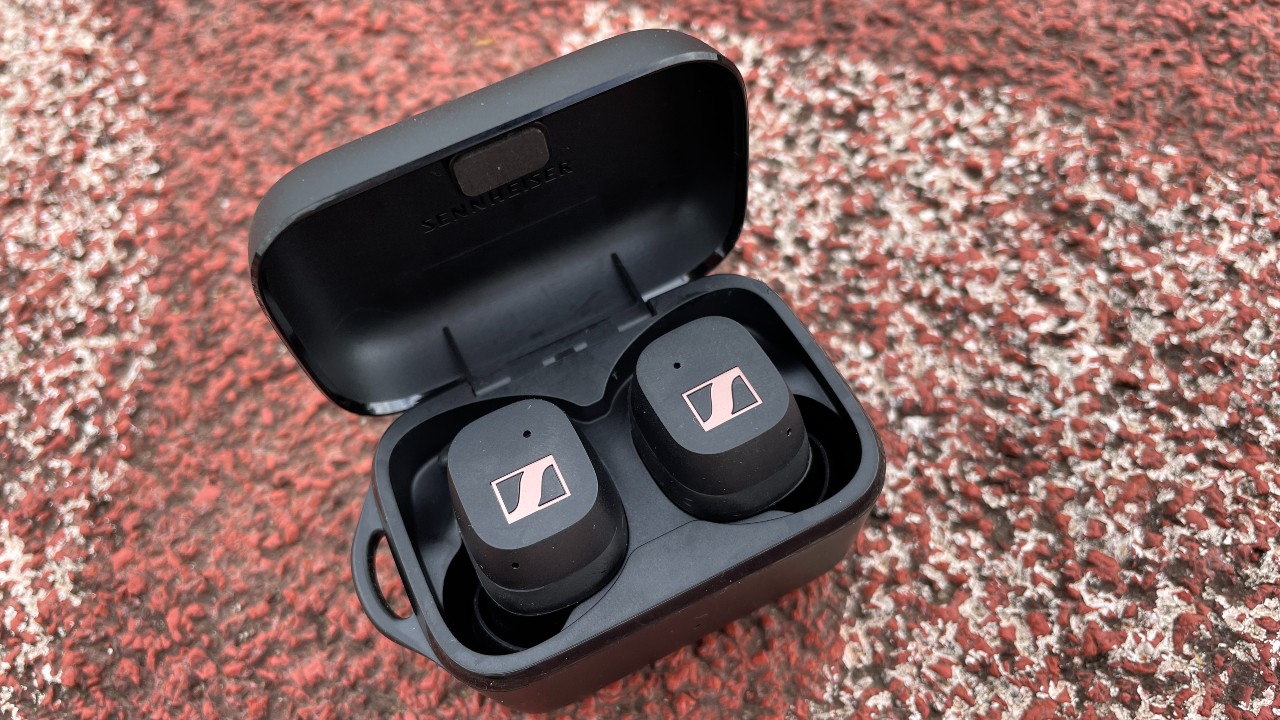
Specifications
Reasons to buy
Reasons to avoid
I would expect top-notch sound from Sennheiser and the brand’s Sport True Wireless buds deliver quality audio in a sportier format. The buds are chunky, but the selection of wings in the box ensures a secure fit, though I did find them a little uncomfortable to wear for long periods outside of running.
The headphones come with two types of ear tips, one designed to let in external sounds and one that blocks out noise. Swapping between these tips didn’t make a huge difference to the sounds I could hear, but they each come with an accompanying EQ setting: Focus for the closed tips and Aware for the open ones. Swapping between these settings changes the sound profile on the buds considerably: Focus delivers brighter, more natural sound while Aware pumps up the bass for a fuller sound.
At $129.95/£119.99 the headphones are good value considering the excellent sound quality, reliable fit and nine-hour battery life, but they don’t offer ANC or a proper awareness mode, which you can find on many headphones at the same price.
Read more in my Sennheiser Sport True Wireless review
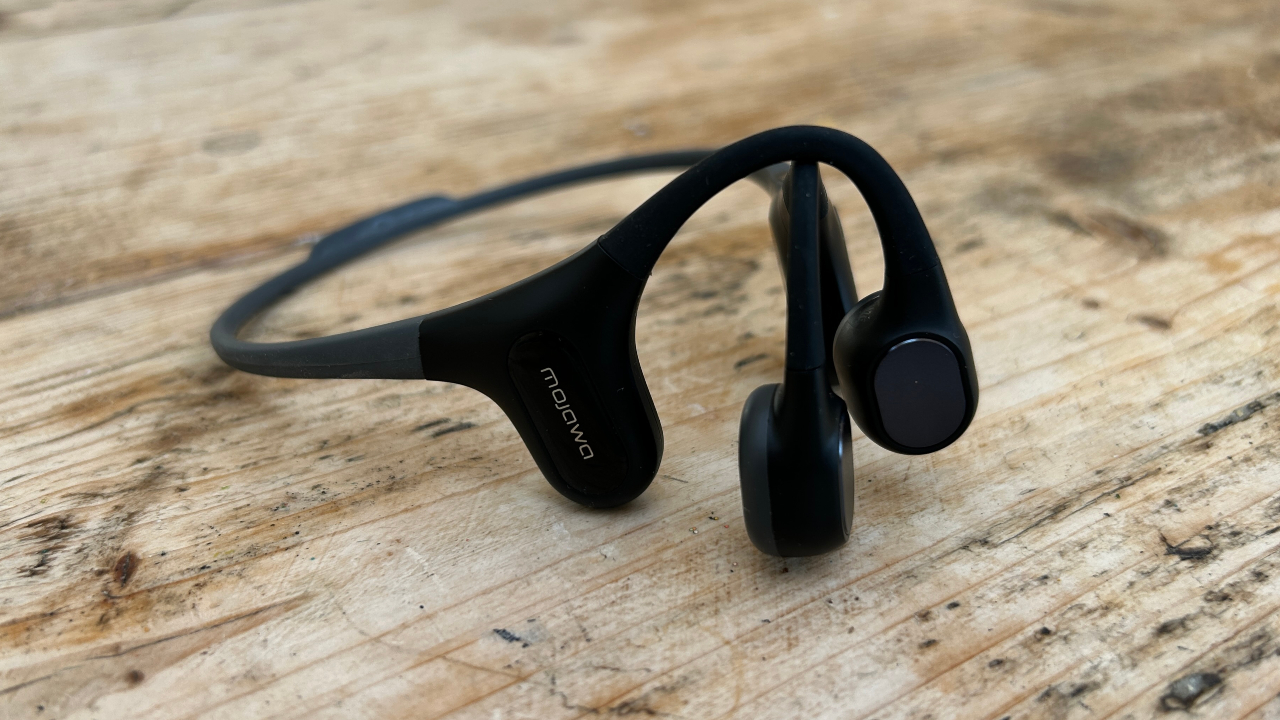
Specifications
Reasons to buy
Reasons to avoid
The key feature on the Mojawa Run Plus bone conduction headphones is that they offer both MP3 and Bluetooth playback. That means if you carry your phone with you on runs you can use Bluetooth, which is more convenient, but when you need to leave your phone behind—perhaps for a race, or when swimming—you can load up the Run Plus headphones with music or podcasts and listen to them directly.
I enjoyed listening to music on the Mojawa headphones too—the sound quality is above average for bone conduction headphones—and they have a very secure fit and a lightweight band. I found them a little less comfortable than Shokz’s bone conduction buds for long runs, but overall they’re a great alternative with the added bonus of Bluetooth/MP3 playback.
Read more in my Mojawa Run Plus review
Running Headphones Buyer’s Guide
Here are the key features to consider when picking out a pair of running headphones.
Wireless Or Truly Wireless?
You can trust Coach
Now that many phones have dispensed with headphone jacks and an extensive range of excellent Bluetooth headphones are available to suit all budgets, there’s no need for runners to struggle with headphone wires. However, you still have to pick between wireless – where the buds are connected by a wire – and truly wireless, where there are no wires involved at all.
Wireless headphones will generally have longer battery lives, but it can often be harder to maintain a secure fit because a bouncing wire (and in some cases remote control panel) will tug on the earbuds.
Truly wireless headphones come with a carry case that also acts as a portable charger, which can extend the time between plugged-in charges considerably.
Fit
A secure fit is crucial. If the buds continually come loose and require frequent adjusting, they’re more trouble than they’re worth. Unfortunately, you can’t really know if a pair will fit your individual ear shape and canal until you’ve bought them, but there are bundled accessories that make a tight fit more likely. Ear hooks are the most reliable option, but they are bulky. If you’re opting for truly wireless in-ear buds, check if they come with a variety of wings and buds so you can pick the combo that keeps them in your ear when running.
To achieve a genuinely secure fit, you may find you have to use large ear wings that start to irritate your ears after a while, especially if you have smaller ears. This is where more expensive pairs prove their worth: some high-end brands, like Bose and Jabra, excel in making soft silicone tips and wings for their buds that offer both comfort and a reliable fit.
Sound
True audiophiles should prepare to be disappointed. For one, over-ear cans that offer superior sound aren’t suitable for running because they rarely stay in place. For most of us, however, there are plenty of running-specific options that sound great, and the sound quality on some budget sports buds has also improved enough to pass muster.
Buds that sit deep in your earholes to form a tight seal will help with sound quality, but these can block out ambient noise entirely, which means it’s harder to hear traffic around you. However, many headphones now offer an ambient noise setting, where external sounds are filtered through so you do have more awareness when you need it. Then you can turn it off and enjoy better sound quality when it’s safe to do so.
Noise cancellation
Headphones that block your ear canal provide passive noise cancellation, where the ear-plug design blocks out some sound, but you can also buy running headphones with active noise cancellation. These headphones detect external sounds and muffle them, allowing you to hear your music more clearly. This is great when you want to focus on your running, but naturally can make you less aware of sounds like traffic.
Battery
The headline figure is the total battery life. We would expect a bare minimum of six to eight hours of battery life from most truly wireless Bluetooth headphones, and that number can rise well into double figures with some sets. You can definitely expect more than 10 hours from wireless headphones.
A carry case that can recharge your wireless buds several times without needing to be charged itself also adds convenience. Look out for a quick-charge feature too. This will usually net you an hour of power for just ten to 15 minutes of charging, which is perfect for when you realise you’ve run out of juice just as you’re getting ready to run.
Waterproofing
There are some fully waterproof headphones available, but for running you just need to ensure they can withstand an unexpected deluge or an especially sweaty session without packing up. Look for a minimum rating of IPX4 for running headphones that won’t let you down when wet.
Controls
Naturally you want to be able to control your music without having to get your phone or MP3 player out while running, so check out the remote on any running headphones – it’ll either be on the strap between the earbuds or built into the buds themselves. Neither is a great option to be honest. If it’s on the strap it’ll bounce and tug at the bud; if built into the bud you either have to press into your ear, or you may find you inadvertently skip a track while adjusting the fit.
What are bone conduction headphones?
A popular choice among runners, bone conduction headphones deliver audio through vibrations on your cheekbones, leaving your ears entirely clear. This means you are more aware of your surroundings while running, and as a result bone conduction headphones are the only kind of headphones allowed in some races.
The disadvantages of using bone conduction headphones is that the sound quality is not as good as with in-ear buds, so you are less likely to use them as your main headphones outside of running.
Are there other kinds of open headphones?
Encouraged by the popularity of bone conduction headphones, brands have been seeking other ways to leave your ears clear while still playing audio. The most popular alternative to bone conduction are headphones that you hook over the top of your ear so a speaker rests near the ear canal without blocking it. This allows for better sound quality than bone conduction.
The Sony Linkbuds offer a unique solution with their holey design. The buds still fit entirely in your ear, but the hole in the middle means your ear canal isn’t blocked. The sound of the Linkbuds isn’t amazing, but they are the smallest open headphones we’ve come across.
Sign up for workout ideas, training advice, reviews of the latest gear and more.

Nick Harris-Fry is a journalist who has been covering health and fitness since 2015. Nick is an avid runner, covering 70-110km a week, which gives him ample opportunity to test a wide range of running shoes and running gear. He is also the chief tester for fitness trackers and running watches, treadmills and exercise bikes, and workout headphones.
